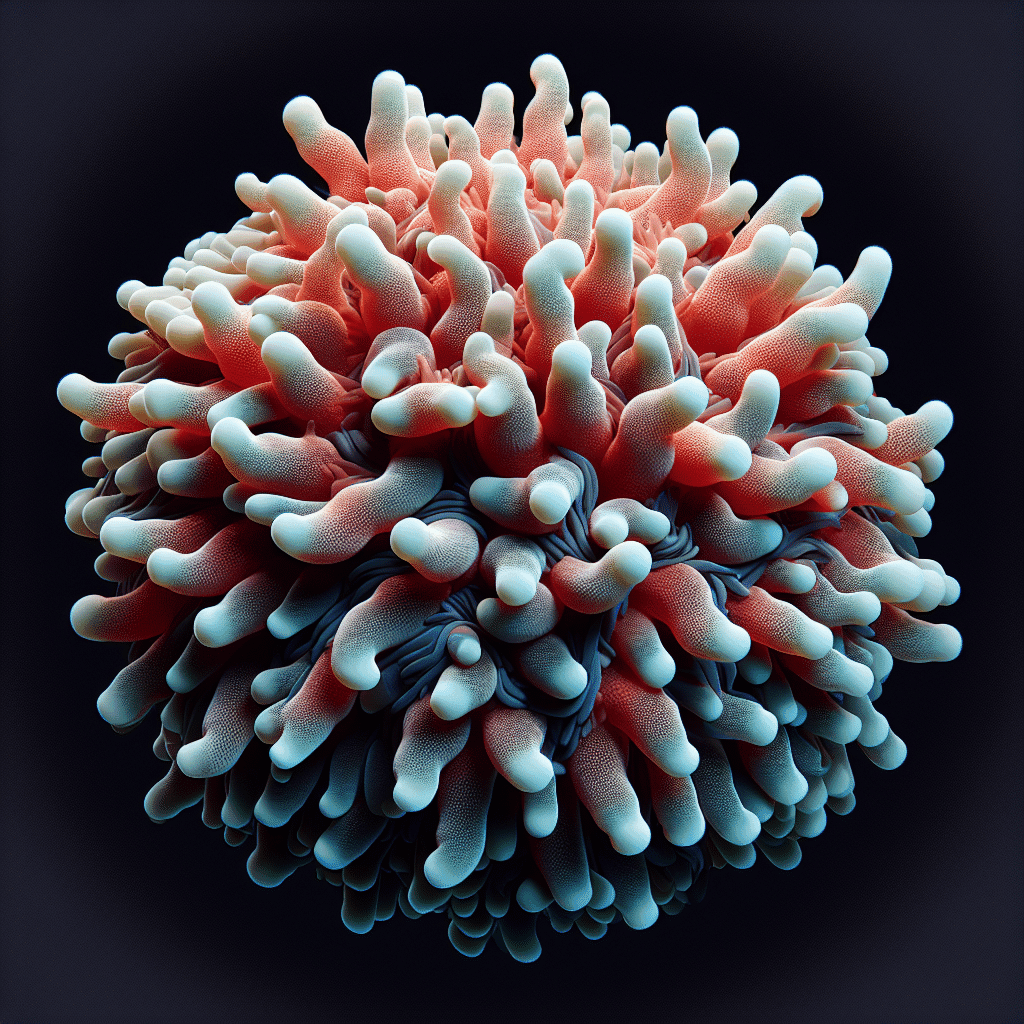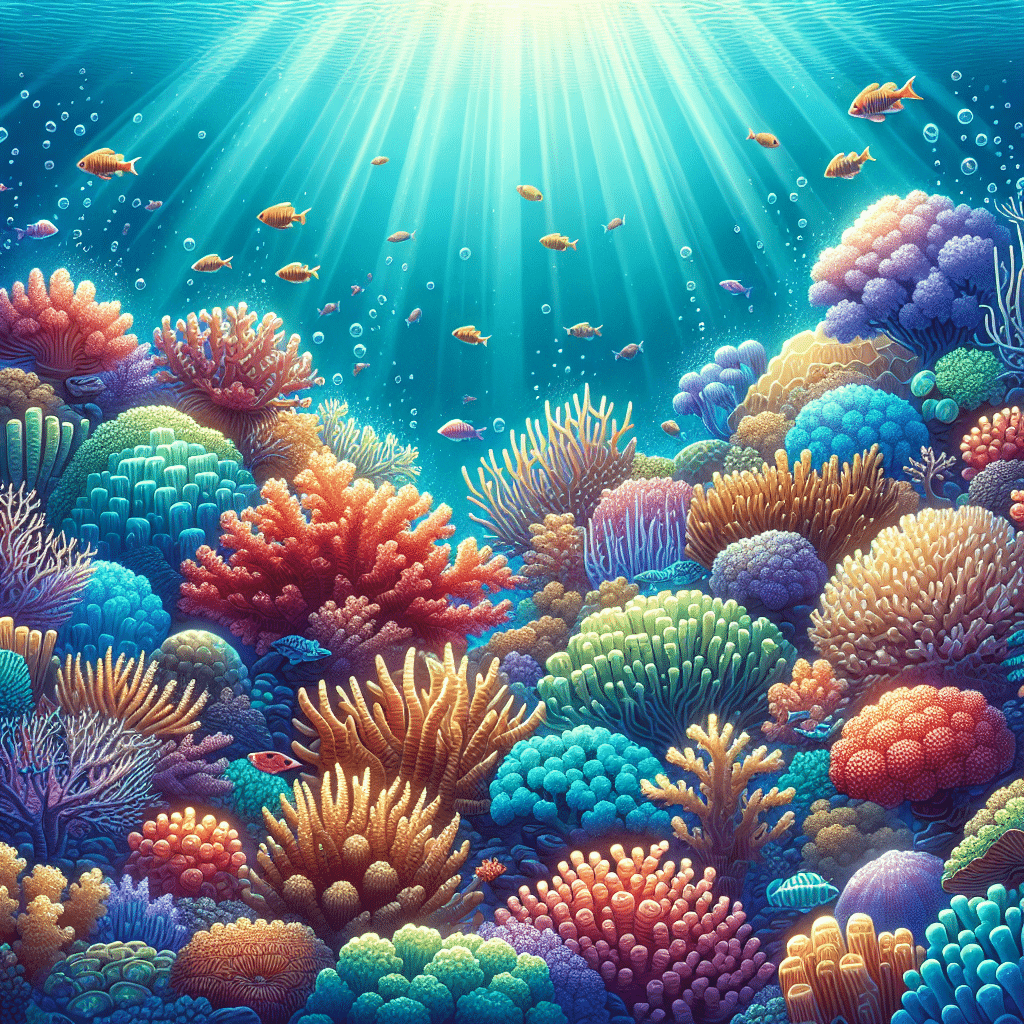Understanding Blastomussa Corals
Introduction to Blastomussa Corals
I’ve always been fascinated by Blastomussa corals. These stunning corals come in a variety of vibrant colors, making them a popular choice among reef tank hobbyists. They are known for their unique appearance and slow growth, which makes them a suitable addition to display tanks where a diverse range of corals can thrive together. It’s essential to understand their specific needs to keep them healthy and vibrant in an aquarium setting.
Importance of Ideal Aquarium Conditions
Maintaining ideal aquarium conditions is crucial for the health of Blastomussa corals. They thrive in lower lighting conditions, which is a significant consideration when setting up your reef tank. Regular water quality checks are essential, as these corals are sensitive to changes in their environment. I find that focusing on factors like water parameters, temperature, and pH can make all the difference in their growth and vibrancy.
Here’s a quick overview of the ideal conditions for Blastomussa corals:
| Parameter | Ideal Range |
|---|---|
| Lighting | Low to moderate |
| Temperature | 72°F – 78°F (22°C – 26°C) |
| Salinity | 1.023 – 1.025 |
| pH | 8.1 – 8.4 |
It’s also important to keep an eye on pest control, as these can harm the corals if not managed properly. Regular maintenance, including pruning and fragging, will help ensure that they remain healthy and continue to flourish. For more information on coral care, check out our section on corals.
Types of Blastomussa Corals
When it comes to Blastomussa corals, I find that there are a couple of standout species that every reef tank hobbyist should be aware of. Here’s a closer look at Blastomussa merleti and Blastomussa wellsi.
Blastomussa Merleti
Blastomussa merleti, often called Ananaskoralle, is a beautiful addition to any reef tank. It thrives best in aquariums of at least 100 liters. While the level of toxicity is unknown, it’s important to handle this coral with care. Captive breeding is possible, but the supply of captive-bred specimens isn’t enough to meet the demand yet. This makes breeding them not only a rewarding hobby but also a step toward conserving natural populations (Meerwasser Lexikon).
| Characteristics | Details |
|---|---|
| Common Name | Ananaskoralle |
| Minimum Tank Size | 100 liters |
| Toxicity Level | Unknown |
| Breeding Potential | Yes |
Blastomussa Wellsi
On the other hand, we have Blastomussa wellsi, which is also known as Großpolypige Steinkoralle. Like its counterpart, it is recommended to keep this coral in an aquarium of at least 100 liters, with an unknown toxicity level as well. Breeding of Blastomussa wellsi is possible, but like B. merleti, the number of offspring is currently insufficient to meet market demand. This presents a great opportunity for hobbyists to contribute to the sustainability of this species (Meerwasser Lexikon).
| Characteristics | Details |
|---|---|
| Common Name | Großpolypige Steinkoralle |
| Minimum Tank Size | 100 liters |
| Toxicity Level | Unknown |
| Breeding Potential | Yes |
Both species are part of the Blastomussa genus, which includes six different types. They are native to the Indo-Pacific and have been classified as Near Threatened by the IUCN. If you’re considering adding some color and life to your tank, these corals are definitely worth exploring! For more information about various types of corals, check out the section on corals.
Aquarium Care for Blastomussa Corals
Tank Size and Toxicity Levels
When it comes to caring for Blastomussa corals, tank size is crucial. I recommend keeping these corals in an aquarium of at least 100 liters. This size provides enough space for them to thrive and promotes better water quality. It’s essential to maintain stable conditions in the tank, as Blastomussa corals can be sensitive to fluctuations.
As for toxicity levels, the information is currently unknown for both Blastomussa merleti and Blastomussa wellsi. It’s always a good idea to be cautious and monitor any potential interactions with other tank inhabitants. Here’s a quick overview:
| Coral Type | Recommended Tank Size | Toxicity Level |
|---|---|---|
| Blastomussa merleti | 100 liters | Unknown |
| Blastomussa wellsi | 100 liters | Unknown |
For more details on various corals, check out our section on corals.
Breeding and Captive Maintenance
Breeding Blastomussa corals can be a rewarding experience. While it is possible to breed Blastomussa wellsi, the number of offspring produced isn’t yet sufficient to meet market demand (Meerwasser Lexikon). I encourage hobbyists to try their hand at breeding to help improve availability and contribute to conservation efforts.
Captive maintenance involves ensuring the right environment for these corals. They thrive best in lower light conditions, so setting up your tank in a way that mimics their natural habitat is key. Blastomussa corals are typically found on vertical rock faces in deeper waters, which suggests they prefer low light (Nano-Reef Forums).
To keep your Blastomussa healthy, consider these maintenance tips:
- Monitor water parameters regularly.
- Provide stable conditions free of drastic changes.
- Ensure proper placement in the aquarium to reflect their natural habitat.
If you’re interested in learning more about the care of different types of corals, check out our articles on specific varieties like brain coral, torch coral, and mushroom coral.
Habitat and Placement
Understanding the natural habitat and proper placement of Blastomussa corals in an aquarium is essential for their health and growth. Let’s dive into where these corals thrive and how to position them within your tank.
Natural Habitat of Blastomussa Corals
Blastomussa corals are typically found in the Philippines on vertical rock faces, often at deeper levels. This indicates their preference for low light conditions, as they are usually positioned in areas that are partly to almost completely shielded from direct light (Nano-Reef Forums). They thrive better under lower lighting conditions, making them ideal for aquarists who may not have the brightest setups.
| Habitat Feature | Description |
|---|---|
| Location | Vertical rock faces in the Philippines |
| Light Preference | Low light conditions |
| Depth | Fairly deep levels |
Lighting and Positioning in Aquarium
For optimal growth, Blastomussa corals prefer a shaded environment with low to moderate lighting, typically between 75-120 PAR. While the Blastomussa wellsi species can be more selective about lighting, Blastomussa merleti can adapt to slightly brighter conditions. It’s crucial to transition these corals gradually to higher light levels to avoid issues like bleaching or tissue recession (Light Fish).
When placing Blastomussa corals in your tank, consider the following:
- Avoid Direct Light: Position them in areas where they receive indirect light to mimic their natural habitat.
- Vertical Placement: Since they naturally grow on vertical surfaces, placing them on the side of your aquarium can help replicate their environment.
- Tank Size Considerations: Given their slow growth rate, they are perfect for display tanks where they won’t outgrow their space quickly (Nano-Reef Forums).
By ensuring you mimic their natural habitat and provide suitable lighting conditions, you can create a thriving environment for your Blastomussa corals. This will enhance not only their health but also the overall aesthetics of your reef tank. For more information on caring for different coral types, check out our articles on brain coral and torch coral.
Growth and Maintenance
Slow Growth Characteristics
I’ve found that blastomussa corals are quite slow growers, which can actually be a benefit for those of us with display tanks. It allows us to showcase a variety of corals without the constant need for pruning. Under ideal conditions, it can take almost a year to see just 2-4 new polyps form. This slow growth rate means that these corals are less aggressive compared to faster-growing species, making them ideal for mixed reef environments.
Typically, blastomussa polyps can range from 3-5 inches in diameter. A small colony with about 6-7 heads can eventually expand to over a foot in width. To encourage growth, spot feeding is a great strategy, as long as the water chemistry remains optimal (Light Fish).
| Growth Rate | Timeframe for New Polyps |
|---|---|
| 2-4 new polyps | Almost 1 year |
| Polyps diameter | 3-5 inches |
| Small colony width | Over 1 foot |
Pruning and Fragging Techniques
When it comes to maintaining my blastomussa corals, I’ve learned that pruning and fragging are not frequent tasks. Given their slow growth, they don’t require regular trimming like some other corals might. However, if I notice any unhealthy or damaged polyps, I can carefully remove them to prevent any potential issues in the rest of the colony.
For fragging, I usually wait until the coral has developed a decent number of heads. Using a sharp, sterile tool, I can cut the healthy section away from the main colony. It’s crucial to ensure that the frag has a few polyps to survive independently. After fragging, I place the new piece in a low-flow area until it acclimatizes.
Here’s a quick guide to the fragging process:
| Step | Description |
|---|---|
| 1. Assess Growth | Ensure coral has enough heads for fragging |
| 2. Use Sterile Tool | Cut the healthy section from the colony |
| 3. Placement | Place frag in low-flow area for acclimatization |
Blastomussa corals are generally easy to care for, which makes them a great addition to any reef tank. If you’re interested in learning more about other types of corals, check out our sections on brain coral and mushroom coral.
Color Variations and Pricing
When it comes to blastomussa corals, the color variations are truly stunning and can significantly enhance the beauty of any reef tank. I’ve come across several popular color variants that not only look great but also have varying price points depending on their rarity and demand.
Popular Color Variants
Here are some of the most sought-after blastomussa variants:
| Color Variant | Description | Average Price (USD) |
|---|---|---|
| Purple Blasto | Bright green center with dark purple ridges. | $15 – $30 |
| Red Blasto | Fuschia coloration on the ridge around the mouth of the polyp. | $20 – $40 |
| Golden Rain | Displays vibrant shades of orange and blue. | $60 – $100 |
| Iron Man Blasto | Features striking oranges and reds, popular for its unique color patterns. | $80 – $120 |
The Purple Blasto is among the most affordable options, making it a great starting point for hobbyists (Light Fish). The Red Blasto is slightly rarer, and its vibrant colors place it at a higher price point. The Golden Rain and Iron Man Blasto variants are more premium, showcasing unique color combinations that are visually appealing.
Pricing Range for Different Varieties
The pricing for blastomussa corals can vary significantly based on factors like availability, rarity, and seller. For instance, blastomussa corals are often hard to obtain due to their natural habitat in deeper reef slopes, making them more valuable in the aquarium trade (TheSea.Org). Here’s a general pricing range for various blastomussa types:
| Variant Type | Pricing Range (USD) |
|---|---|
| Common Variants | $15 – $40 |
| Rare Variants | $60 – $120 |
| Premium or Unique | $70 and above |
These prices can fluctuate based on market demand and the specific characteristics of the coral. It’s always a good idea to shop around and check local fish stores or online retailers to find the best deals on these beautiful corals. For more coral options, check out other varieties like brain coral and duncan coral.
Feeding and Water Quality
When it comes to keeping my Blastomussa corals healthy and vibrant, understanding their feeding needs and maintaining optimal water parameters are key.
Feeding Recommendations
I’ve found that while Blastomussa corals are photosynthetic and derive some nutrition from the zooxanthellae living within them, supplementing their diet can enhance their growth and color. It’s generally recommended to feed them once a week. They accept a variety of foods, making it easy to cater to their needs. Here are some options I like to use:
| Food Type | Description |
|---|---|
| Fine powdered coral food | Specifically designed for corals, rich in nutrients. |
| Mysis shrimp | Small, nutritious shrimp that Blastomussa corals can consume. |
When feeding, I’ve noticed that Blastomussa corals slowly close around their food, taking about an hour to consume it fully Queen City Corals. This method of feeding ensures they receive the nutrients they need while enjoying the process.
Maintaining Water Parameters
For Blastomussa corals to thrive, maintaining the right water parameters is crucial. They prefer low flow and low to medium light conditions and thrive in the following water quality ranges:
| Parameter | Ideal Range |
|---|---|
| Nitrates | 5-10 ppm |
| Phosphates | 0.03-0.25 ppm |
| Calcium | 400-480 ppm |
| Alkalinity | 7-10 DKH |
| Magnesium | 1300-1500 ppm |
These levels can usually be maintained through regular water changes or by dosing appropriate supplements (Queen City Corals). Keeping an eye on these parameters helps ensure that my Blastomussa corals remain healthy and vibrant in my reef tank.
For more insights on corals, check out our sections on brain coral and torch coral, or explore other fascinating species like mushroom coral and acropora.
Reproduction and Conservation
Sexual and Asexual Reproduction
Blastomussa corals have a fascinating reproductive strategy that includes both sexual and asexual methods. For sexual reproduction, these corals release gametes into the water column, which leads to external fertilization. This process allows for genetic diversity and the formation of new colonies.
On the other hand, asexual reproduction happens through a process known as budding. In this case, new polyps develop from the existing parent colony, allowing the coral to expand and thrive without the need for external fertilization (TheSea.Org). This dual reproductive capability helps ensure the survival of Blastomussa populations in varying environmental conditions.
Conservation Efforts and Trade Availability
The conservation status of Blastomussa corals, particularly species like Blastomussa wellsi and Blastomussa merleti, is classified as Near Threatened by the IUCN. This designation highlights the need for responsible management and conservation efforts. Although breeding in captivity is possible for these species, the current supply of captive-bred specimens is still inadequate to meet the high demand from the trade (Light Fish).
Hobbyists are encouraged to try their hand at breeding Blastomussa corals in captivity. Doing so can help improve availability in the trade while also conserving natural populations. Captive breeding can alleviate some pressure on wild populations, which are often difficult to harvest due to their natural habitats being located at significant depths on lower reef slopes. This rarity contributes to their high prices; individual polyps can sell for $70 or more (TheSea.Org).
As I continue to care for my own reef tank and these stunning corals, I’m always mindful of the impact that our hobby can have on natural ecosystems. Emphasizing responsible practices and supporting conservation efforts can help ensure that future generations can enjoy the beauty of Blastomussa corals.



